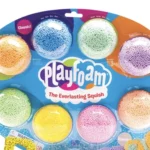Ant farms are not just for kids, they can be a great teaching tool for teachers as well. With the ability to teach responsibility, stimulate curiosity, and add to classroom decor, ant farms can be a valuable addition to any classroom. There are a variety of ant farm kits available, from starter kits for beginners to advanced kits for experienced teachers. And with discounts available for teachers, setting up and maintaining an ant farm has never been easier. In this article, we will explore the benefits of using ant farms in the classroom, the types of ant farm kits available, how to qualify for discounts, and tips for setting up and maintaining ant farms.
Contents
- Why Ant Farms are Great for Teachers
- Types of Ant Farm Kits Available
- Discounts for Teachers
- How to Set Up and Maintain Ant Farms
- Conclusion
-
Frequently Asked Questions
- What types of ants are best for ant farms?
- Can I use ants from my backyard for my ant farm?
- How long do ants live in an ant farm?
- What should I feed my ants?
- What is the ideal temperature for an ant farm?
- How often should I clean my ant farm?
- Can I add decorations to my ant farm?
- How can I incorporate ant farms into my lesson plans?
- What are the benefits of using ant farms in the classroom?
- How can I get my students excited about the ant farm?
- References
Why Ant Farms are Great for Teachers

Ant farms are not only fascinating for students but also great for teachers. They offer an excellent opportunity to teach responsibility and care, as students are tasked with taking care of the ants and providing them with food and water. Additionally, ant farms stimulate curiosity and learning by providing an up-close look at the behavior and lifestyle of ants. They also enhance classroom decor, providing a unique and interesting addition to any classroom. With a variety of ant farm kits available, including starter kits for beginners, advanced kits for experienced teachers, and harvester ant kits for interactive learning, teachers can choose the best option to fit their needs. And with discounts available for teachers, it’s easy to incorporate ant farms into the classroom. Qualifying for discounts is simple, and discounted ant farm kit options are available to help teachers save money. Plus, with a step-by-step set-up guide, ant feeding and care tips, and an ant farm maintenance checklist, setting up and maintaining ant farms is a breeze.
Teach Responsibility and Care
Ant farms are an excellent way to teach students about responsibility and care. When students are given the task of taking care of an ant farm, they learn firsthand about the importance of keeping their environment clean and safe for their ants. They also learn about the importance of feeding the ants and providing them with the right amount of water. By taking care of their ants, students learn to be responsible for the well-being of another living creature, which can translate to other areas of their lives.
Here are some specific ways ant farms can teach responsibility and care:
| Task | Responsibility Taught |
| Feeding the ants | Providing for the needs of another living creature |
| Cleaning the ant farm | Maintaining a clean and safe environment for the ants |
| Observing the ants | Noticing changes in behavior or health and taking appropriate action |
| Protecting the ants | Keeping the ants safe from harm or outside interference |
In addition to teaching responsibility, ant farms can also help students develop a sense of care and empathy for other living creatures. When students observe the ants going about their daily activities, they may start to feel a connection with the ants and want to ensure their well-being. This can lead to a greater sense of compassion and caring, which can have a positive impact on the students’ relationships with others.
By incorporating ant farms into the classroom, teachers can create a unique and engaging learning experience that not only teaches science concepts but also important life skills. And with discounts available for teachers, ant farms are an affordable and practical addition to any classroom.
Stimulate Curiosity and Learning
Ant farms are a great way to stimulate curiosity and learning in students. Ants are fascinating creatures that have a lot to teach us about the world around us. By observing ants in their natural habitat, students can learn about their behavior, communication, and social structure. They can also learn about the important role that ants play in our ecosystem.
Ant farms can be used to teach a variety of subjects, including science, math, and language arts. For example, students can observe and record the ants’ behavior, create graphs to show their observations, and write stories or poems about the ants.
In addition to teaching academic subjects, ant farms can also teach important life skills, such as patience, observation, and responsibility. Students can learn to care for the ants by providing them with food and water, and by keeping their habitat clean. This can help students develop a sense of responsibility and empathy for living creatures.
Ant farms are a great tool for teachers who want to engage their students in hands-on learning and stimulate their curiosity about the natural world. With the wide variety of ant farm kits available, teachers can choose the one that best fits their students’ needs and level of experience. Plus, with discounts available for teachers, ant farms are an affordable and fun addition to any classroom.
Enhance Classroom Decor
Ant farms not only provide an opportunity for learning, but they also add a unique and interesting element to classroom decor. With their intricate tunnels and busy inhabitants, ant farms can be mesmerizing to watch and can help create a calming atmosphere in the classroom. Placing an ant farm near book bins or classroom mailboxes is a great way to encourage students to take a moment to observe and reflect. Ant farms come in a variety of shapes and sizes to fit any classroom aesthetic. Some models even come with LED lights to create a stunning display for students and visitors alike. Ant farms are a great way to enhance the look and feel of any classroom while also providing an opportunity for hands-on learning.
Types of Ant Farm Kits Available

There are various types of ant farm kits available for teachers to choose from. Starter kits are perfect for beginners who are new to ant farming and want to start with a simple setup. For experienced teachers, advanced kits are a great option that allow for more customization and observation of the ants. For those looking for an interactive learning experience, harvester ant kits are available that allow students to watch the ants collect and store food. These kits can be a great addition to any classroom, providing a unique learning experience for students.
Starter Kits for Beginners
If you’re new to ant farming, a starter kit is a great way to begin. These kits come with everything you need to set up and maintain a basic ant farm. They are perfect for classrooms or homeschooling environments where children can learn about ant habitats and behavior. Starter kits typically include:
- A clear plastic container to house the ants
- A bag of sand or soil for the ants to burrow in
- An ant-catching tool or instructions on how to catch your own ants
- A magnifying glass to observe the ants closely
- Instructions on how to set up and maintain the ant farm
Some starter kits also include ant food and a water dropper to keep the ants hydrated. These kits are a great way to introduce students to the world of ant farming and encourage them to learn about the fascinating creatures. To purchase starter kits at a discounted price, check out our website for ongoing promotions or visit our educator discount page to learn more about our special offers for teachers.
Advanced Kits for Experienced Teachers
For teachers who have experience with ant farms, advanced kits are available to enhance their classroom experience. These kits are designed with additional features to provide an even more engaging learning experience for students. One such kit is the ant habitat kit “Paris”, which includes a stylish and modern formicarium with a unique design that allows students to observe the ants from multiple angles. Another option is the ant habitat kit “Everest”, which features a large and intricate formicarium that allows for more complex ant behavior. For teachers who want to create a more hands-on experience, there are harvester ant kits available. These kits come with everything needed to start a colony of harvester ants, allowing students to interact with the ants and learn about their behavior firsthand.
To purchase these advanced kits, teachers can take advantage of discounts from Lakeshore Learning, which offers a variety of classroom supplies, including book bins, classroom mailboxes, and teacher backpacks. With these advanced ant farm kits, experienced teachers can take their classroom to the next level and provide an unforgettable learning experience for their students.
Harvester Ant Kits for Interactive Learning
Harvester ant kits are designed to provide an interactive learning experience for students. These kits come with everything you need to create an ant habitat and observe the ants as they live and work. One of the benefits of using harvester ant kits is that they are ideal for studying ant behavior. Students can observe how the ants interact with one another, forage for food, and carry out their daily tasks. This can lead to a better understanding of the ants’ role in the ecosystem and how they contribute to the environment.
Harvester ant kits are also great for teaching students about responsibility and care. By taking care of the ants and providing them with food and water, students can learn about the importance of taking care of living things. This can help to instill a sense of empathy and compassion in students and encourage them to take an active role in caring for the environment.
There are different types of harvester ant kits available, depending on the needs of your classroom. Some kits are designed for small groups of students, while others are designed for larger classes. Some kits come with educational materials, such as books or posters, to help students learn more about the ants and their behavior.
If you’re interested in purchasing a harvester ant kit for your classroom, there are many options available. You can choose from basic kits that include just the essentials, or more advanced kits that come with additional materials and accessories. Some kits even come with a voucher for live ants, which can be ordered separately and delivered directly to your classroom.
Harvester ant kits are a great way to engage students in interactive learning and teach them about responsibility, care, and the environment. They are a fun and educational addition to any classroom and can help to spark curiosity and encourage students to explore the world around them.
Discounts for Teachers

As a teacher, you can receive discounts on ant farm kits for your classroom. To qualify, contact the ant farm supplier and inquire about their special school discounts. Some options for discounted ant farm kits include starter kits for beginners, advanced kits for experienced teachers, and harvester ant kits for interactive learning. By incorporating ant farms into your classroom, you can teach responsibility and care, stimulate curiosity and learning, and enhance classroom decor. Setting up and maintaining ant farms is easy with step-by-step guides and care tips. So why not add an ant farm to your classroom and give your students a unique learning experience?
How to Qualify for Discounts
To qualify for discounts on ant farm kits, teachers must provide proof of their employment at a school or educational institution. This can be done by submitting a school ID, a letter from the school principal, or other documentation that confirms their position. Once qualified, teachers can enjoy discounted prices on a variety of ant farm kits, including starter kits for beginners, advanced kits for experienced teachers, and harvester ant kits for interactive learning. These discounted ant farm kit options are a great way for teachers to incorporate hands-on learning into their curriculum and provide their students with a unique and engaging educational experience. Teachers can also save money on classroom supplies and materials by checking out our selection of classroom mailboxes, book bins, and teacher backpacks.
Discounted Ant Farm Kit Options
As a teacher, you may be interested in purchasing an ant farm kit for your classroom, but the cost can be a concern. That’s why we offer discounted ant farm kits for educators. Our discounted ant farm kits are just as high quality as our regular kits, but they are available at a lower price to help you bring the wonder of ants into your classroom without breaking the bank.
Here are some discounted ant farm kit options:
- Natural Ant Habitat Kit – Small: This kit is perfect for beginners and those on a budget. It includes a natural ant habitat and everything you need to get started, including sand, a pipette, and instructions. Discounted price: $25.00.
- Ant Habitat Kit – Harvester Ants: This kit is perfect for interactive learning. It includes a habitat, live harvester ants, sand, and a pipette. Discounted price: $50.00.
- Ant Habitat “Paris”: This unique ant habitat is perfect for more advanced classrooms and older students. It features a modern design and includes a habitat, sand, and a pipette. Discounted price: $75.00.
Don’t miss out on the opportunity to bring the fascinating world of ants into your classroom at an affordable price.
How to Set Up and Maintain Ant Farms
Setting up and maintaining an ant farm can be a fun and educational experience for both teachers and students. To get started, it’s important to choose the right type of ant farm kit and follow a step-by-step guide for setting it up. Some important tips to keep in mind include creating a suitable environment for the ants with proper ventilation, providing them with the right food and water, and monitoring their behavior and health regularly. It’s also important to keep the ant farm clean and tidy, and to follow a maintenance checklist to ensure that everything is in good working order. With a little bit of patience and care, an ant farm can be a great addition to any classroom or educational setting.
Step-by-Step Set Up Guide
Setting up an ant farm kit can be an exciting and educational activity for both teachers and students. Here’s a step-by-step guide to help you get started:
Step 1: Choose Your Ant Farm Kit
There are various types of ant farm kits available, including starter kits for beginners, advanced kits for experienced teachers, and harvester ant kits for interactive learning. Choose the one that suits your needs and budget.
Step 2: Prepare the Ant Farm
Once you have your ant farm kit, carefully read the instructions provided. Make sure you have all the necessary equipment, including sand, soil, and food for the ants. Prepare the ant farm by filling it with sand and soil, and moistening it with water.
Step 3: Catching or Purchasing Ants
Depending on the kit you have chosen, you may need to catch ants or purchase them separately. If you need to catch ants, look for them in your backyard or a nearby park. Make sure you catch a queen ant, as she is the only one that can lay eggs and start a colony.
Step 4: Introduce Ants to the Farm
Once you have caught or purchased ants, introduce them to the ant farm. Carefully pour them into the farm, making sure they don’t escape. Observe the ants as they explore their new environment.
Step 5: Feed and Care for the Ants
Ants need food and water to survive, so make sure you provide them with a source of both. You can feed them with fruits, sugar water, or other sugary substances. Make sure to clean the ant farm regularly and remove any dead ants.
Step 6: Observe and Learn
Now that your ant farm is set up, take some time to observe the ants and learn about their behavior. You can use this opportunity to teach your students about ant colonies, social behavior, and the food chain.
Setting up an ant farm kit can be a fun and educational activity for teachers and students alike. By following these simple steps, you can create a fascinating ecosystem in your classroom and stimulate curiosity and learning among your students.
Ant Feeding and Care Tips
When it comes to feeding your ants, it’s important to remember that they have different dietary needs than humans. Ants are omnivores, which means they eat both plant and animal matter. You can feed your ants vegetable and fruit scraps, sugar water, or even dried cat food (avoid fresh meat). However, be careful not to overfeed them, as this can lead to mold growth, which can harm your ants.
It’s also important to provide your ants with a source of water. You can do this by placing a small container of water inside the ant farm or by using a water feeder. Be sure to change the water regularly to prevent mold growth.
In addition to feeding your ants, you’ll need to take care of their living space. Don’t place the ant farm in strong direct sunlight or you risk overheating the ant farm. If you’re unsure about the species of ant that you have, you can check with a local museum before collecting ants.
Regular maintenance of the ant farm is also important for the health of your ants. You should clean out the waste and dead ants regularly and replace the substrate every few months. By following these simple feeding and care tips, you can create a healthy and thriving ant colony in your classroom.
Ant Farm Maintenance Checklist
Maintaining an ant farm requires some effort, but with the right tools and knowledge, it can be a breeze. Here is a checklist of things to keep in mind when maintaining your ant farm:
- Feeding: Make sure your ants have access to fresh food and water. Ants need a source of sugar, like honey or syrup, as well as a source of protein, like small insects or fish food.
- Cleaning: Regularly clean out any debris or dead ants from your ant farm to keep the environment healthy. Use a soft brush or cloth to gently wipe down the walls of the ant farm.
- Temperature and Humidity: Ants thrive in a warm and humid environment. Keep your ant farm away from direct sunlight and drafts, and check the humidity levels regularly.
- Ant Health: Keep an eye on your ants for any signs of illness or stress, such as lethargy or aggression. If you notice any issues, consult an expert or a vet.
- Ant Escape: Make sure your ant farm is escape-proof by sealing any gaps or cracks with petroleum jelly or baby powder. Check the ant farm regularly for any signs of escape, and seal any holes immediately.
By following this checklist, you can ensure that your ant farm stays healthy and your ants stay happy. Happy ants make for a great addition to any classroom or home.
Conclusion
In conclusion, ant farms are an excellent tool for teachers to enhance their students’ learning experience. Ant farms teach responsibility and care, stimulate curiosity and learning, and enhance classroom decor. There are various types of ant farm kits available, including starter kits for beginners, advanced kits for experienced teachers, and harvester ant kits for interactive learning.
Discounts are available for teachers who qualify, and there are discounted ant farm kit options to choose from. Setting up and maintaining ant farms is easy with a step-by-step guide, ant feeding and care tips, and an ant farm maintenance checklist.
By incorporating ant farms into the classroom, teachers can provide hands-on learning opportunities that engage and inspire their students. Students can observe the ants’ behavior, learn about their life cycle, and explore the complex social structure of ant colonies.
Overall, ant farms are a fun and educational addition to any classroom. Teachers can use them to teach a variety of subjects, including science, math, and art. So, don’t hesitate to try out an ant farm kit today and watch your students’ curiosity and excitement grow!
Frequently Asked Questions
What types of ants are best for ant farms?
It is best to use non-stinging ants like harvester ants for your ant farm. You can purchase harvester ant kits specifically designed for ant farms.
Can I use ants from my backyard for my ant farm?
We do not recommend using ants from your backyard for your ant farm. It is best to purchase specific ant kits as they are non-stinging and safe for the classroom.
How long do ants live in an ant farm?
The lifespan of ants varies depending on the species. However, most ants live for a few months to a few years in an ant farm.
What should I feed my ants?
You can feed your ants with vegetables, fruits, and even dried cat food. Avoid feeding them fresh meat as it can spoil and attract bacteria.
What is the ideal temperature for an ant farm?
Ant farms should be kept at room temperature, around 70-80 degrees Fahrenheit. Avoid placing them in direct sunlight as it can overheat the ant farm.
How often should I clean my ant farm?
You should clean your ant farm every 3-4 months. Use a small brush to remove any debris and replace the sand or soil if necessary.
Can I add decorations to my ant farm?
Avoid adding decorations to your ant farm as they can disturb the ants’ natural environment. Stick to the basic setup provided in the ant kit.
How can I incorporate ant farms into my lesson plans?
You can use ant farms to teach about biology, anatomy, and social structures. It can also be used to teach responsibility and care.
What are the benefits of using ant farms in the classroom?
The benefits of using ant farms in the classroom include stimulating curiosity and learning, enhancing classroom decor, and teaching responsibility and care.
How can I get my students excited about the ant farm?
You can get your students excited about the ant farm by incorporating it into your lesson plans and encouraging them to observe the ants’ behavior. You can also assign projects related to the ant farm.






